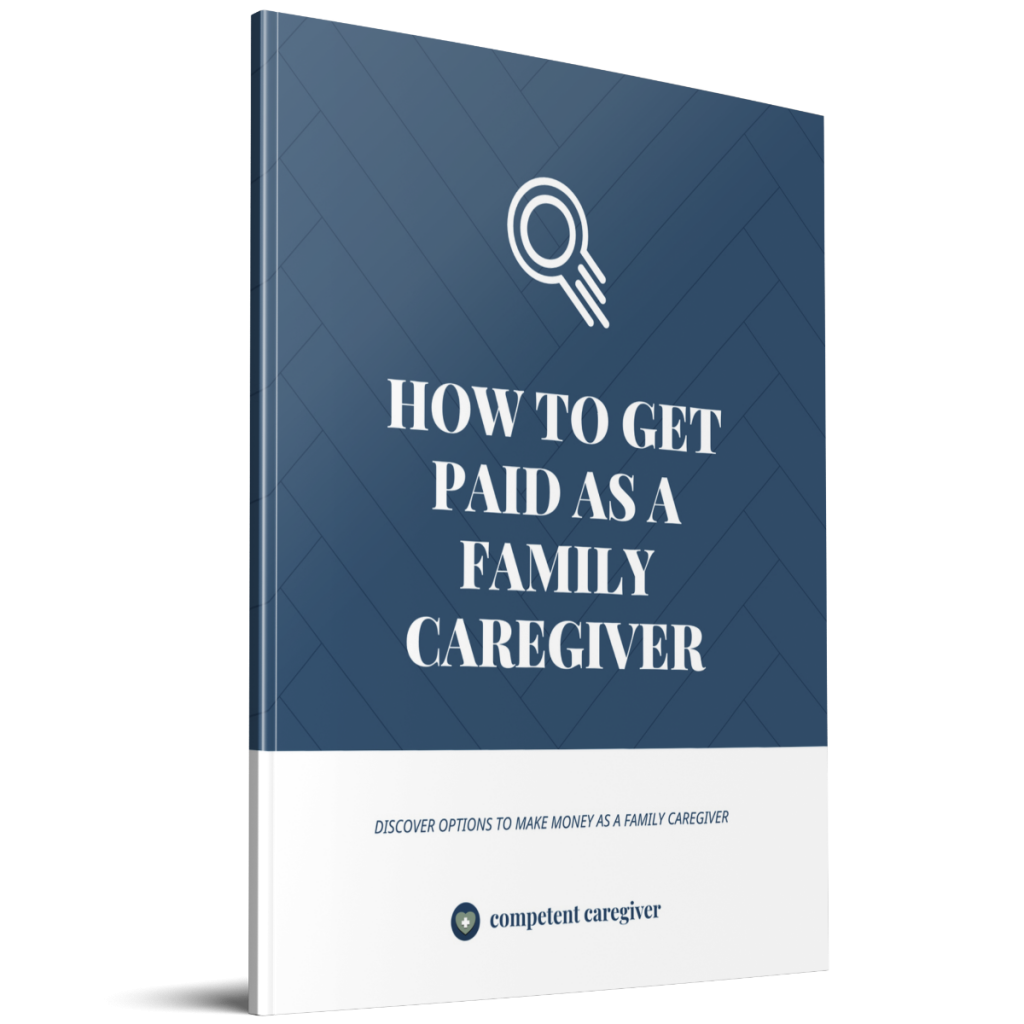A Complete Guide to Becoming a Paid Caregiver for a Family Member in Connecticut

Introduction
Providing care for a family member in Connecticut can be rewarding, but it can also place significant financial and emotional demands on caregivers. To address these challenges, Connecticut offers several programs that allow family members to receive compensation for providing home-based care. Understanding how to become a paid caregiver for a family member in Connecticut involves navigating state Medicaid programs, eligibility requirements, and application processes. This guide offers detailed, actionable steps so you can access available resources and support.
Understanding Paid Family Caregiver Programs in Connecticut
Connecticut recognizes the vital role that family caregivers play and has established multiple programs to help them receive financial assistance. The most prominent options include:
- Personal Care Assistance (PCA) Waiver
- Community First Choice (CFC)
- Adult Family Living (AFL)
- Connecticut Home Care Program for Elders (CHCPE)
- Veteran-Directed Care (VDC) Program
- Department of Developmental Services (DDS) Paid Family Caregiver Program
Each program has its own eligibility criteria and application process. In addition, certain programs may have restrictions regarding the caregiver’s relationship to the care recipient. For example, some exclude spouses or legal conservators, while others are more flexible.
Eligibility Requirements
Eligibility to become a paid caregiver for a family member in Connecticut depends on the specific program:

Source: idiomas.gcfglobal.org
- Medicaid Enrollment: Most programs require the care recipient to be enrolled in Connecticut Medicaid (HUSKY Health) or have an active Medicaid application. Medicaid eligibility is determined by income, assets, age, and medical needs. [2]
- Level of Care: The care recipient must typically require assistance with at least two Activities of Daily Living (ADLs), such as bathing, dressing, eating, or mobility. [1]
- Age: Some programs are age-specific. For example, the PCA Waiver is for those aged 18-64; the CHCPE is for individuals 65 and older. [3]
- Relationship: Eligibility for payment as a caregiver may depend on your relationship with the care recipient. Some programs allow most family members (including adult children and siblings), while others restrict or exclude spouses or legal guardians. [2]
- Ability to Provide Care: The caregiver must be physically and mentally able to provide the necessary support and may need to live with the care recipient. [2]
For parents and legal guardians of minors with disabilities, the Connecticut DDS has implemented a program (as of May 1, 2024) that allows them to be paid for providing certain waivered supports. [5]
Key Programs and How to Apply
Personal Care Assistance (PCA) Waiver
The PCA Waiver enables eligible Medicaid recipients between ages 18 and 64 with chronic health conditions to hire family members as personal care attendants. Payment rates are negotiated between the care recipient and the caregiver and typically align with local home care wages. [1]
To apply:
- Contact the Connecticut Department of Social Services (DSS) or your local Area Agency on Aging (AAA) to request information about the PCA Waiver and begin the application process.
- Verify Medicaid eligibility through Connecticut’s HUSKY Health program.
- Complete application forms and submit documentation of the care recipient’s medical and financial eligibility.
- Work with a DSS case manager to develop a care plan and enroll in the program.
If you are unsure where to start, you can search for your local Area Agency on Aging or call DSS for guidance on the PCA Waiver process.
Community First Choice (CFC) Program
The CFC program allows Medicaid members to direct their own care, including hiring family members as paid caregivers. The care recipient must require a nursing facility level of care and be enrolled in Medicaid. [2] [4]
Steps to apply:
- Confirm Medicaid eligibility for the care recipient.
- Request information about the CFC program through the Department of Social Services or your care manager.
- Complete an assessment to determine the level of care needed and develop a care plan.
- Hire a family member as a caregiver under the self-directed care model.
Adult Family Living (AFL) Program
The AFL program, offered through agencies like Careforth, allows family members (except spouses or legal guardians in most cases) who live with the care recipient to be compensated for providing daily care. The AFL program provides ongoing coaching and professional support for caregivers. [3] [4]
To apply:
- Contact Careforth or similar agencies for program details and eligibility criteria.
- Complete the application process, including a home assessment and care plan review.
- Participate in ongoing support and supervision as required by the program.
Note: The AFL program is best suited for those who live with or are willing to move in with the care recipient.
Connecticut Home Care Program for Elders (CHCPE)
The CHCPE helps adults aged 65 and older remain at home by providing personal care and support services. While direct payment to family members is rare under this program, the AFL option within CHCPE may be an exception. [3]
To apply, visit the official Connecticut Home Care Program for Elders page on the Department of Social Services website or call your local DSS office.
Department of Developmental Services (DDS) Paid Family Caregiver Program
As of May 1, 2024, Connecticut’s DDS allows certain family members, including legal guardians and parents of minor children, to receive payment for providing approved supports to individuals with intellectual or developmental disabilities. [5]
Application steps include:
- Consult with your DDS case manager to review eligibility and appropriate supports.
- Review the DDS Paid Family Caregiver Fact Sheets for detailed criteria and program information.
- Submit necessary forms and documentation as guided by your DDS support team.
Veteran-Directed Care (VDC) Program
Veterans receiving care at home may be eligible for the VDC program, which allows them to hire family members as paid caregivers. Contact the Connecticut Department of Veterans Affairs or the VA Connecticut Health Care System for more information.
Practical Steps and Tips
1. Assess Eligibility: Start by determining if your loved one qualifies for Medicaid or another program. Use online screening tools from organizations such as the American Council on Aging or consult with a local social worker. [2]
2. Gather Documentation: Prepare all necessary documents, such as proof of income, assets, medical needs, and residency status. Having these in advance will help expedite the application process.
3. Contact the Right Agency: Reach out to the Connecticut Department of Social Services, your Area Agency on Aging, or specific intermediary agencies like Careforth for program applications and guidance.

Source: inglesmadrid.com
4. Complete the Application: Fill out all required forms honestly and thoroughly. If you need help, many agencies offer case managers or application assistance.
5. Participate in Assessments: Most programs require in-home or phone assessments to determine the care recipient’s needs and confirm eligibility for services.
6. Negotiate and Document Care: If the program allows, negotiate your pay rate within the program’s guidelines and keep records of the care provided to meet audit or reporting requirements.
Examples and Real-World Scenarios
Consider Jane, a Connecticut resident caring for her adult son with a disability. She contacted DDS and, after working with a case manager, enrolled as a paid caregiver under the new DDS family caregiver program. Jane receives compensation for providing individualized home support and respite services, allowing her to maintain family stability while managing her son’s care needs. [5]
Another example: Michael’s elderly father, who has Medicaid, qualified for the PCA Waiver. Michael now receives payment for providing daily personal care, which helped him reduce the financial strain caused by reducing his work hours to care for his father. [1]
Challenges and Solutions
Family caregivers often face challenges such as complicated application processes, unclear eligibility requirements, and program waitlists. To overcome these barriers, it is critical to:
- Start early and be persistent in following up with agencies and case workers
- Maintain organized records and documentation
- Seek help from local Area Agencies on Aging or advocacy groups
- Consider financial planning and explore other benefits such as tax deductions or respite care grants [4]
Some programs may have waiting lists or limited funding, so apply as soon as eligibility is established and explore multiple programs if possible.
Alternative Approaches
If you do not qualify for the above programs, consider:
- Exploring private long-term care insurance policies that may reimburse family caregivers
- Utilizing the National Family Caregiver Support Program (NFCSP) for respite and support services (via local Area Agencies on Aging)
- Investigating veterans’ benefits and tax credits designed for caregivers
- Seeking assistance from nonprofit organizations that help caregivers navigate benefits and support networks
Summary and Key Takeaways
Becoming a paid caregiver for a family member in Connecticut is possible through a variety of state-administered and agency-supported programs, especially for those who meet Medicaid eligibility. The process requires careful documentation, persistence, and collaboration with local agencies. If you are unsure where to begin, you can contact the Connecticut Department of Social Services, your Area Agency on Aging, or the Connecticut Department of Developmental Services for guidance on available options and next steps. Always verify program details and eligibility requirements with the administering agency before beginning your application.
References
- [1] RubyWell (2025). How To Get Paid For Caring for a Family Member in Connecticut.
- [2] Careforth (2025). Get Paid to Be a Caregiver Through Connecticut Medicaid.
- [3] Careforth (2023). How to Become a Paid Family Caregiver: A Step-by-Step Guide.
- [4] FreedomCare (2024). How to Get Paid as a Family Caregiver in Connecticut.
- [5] CT.gov (2024). Paid Family Caregivers Information.






